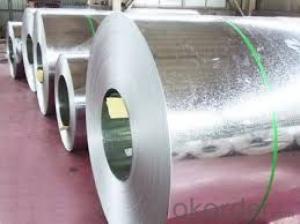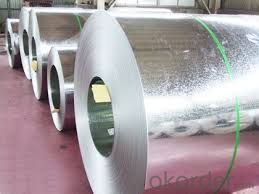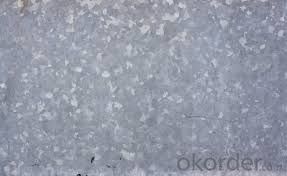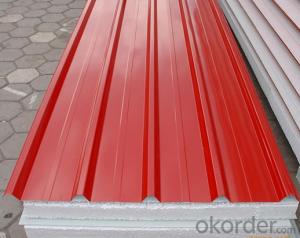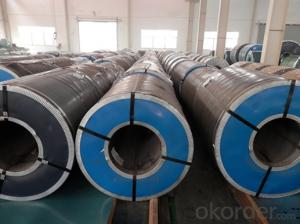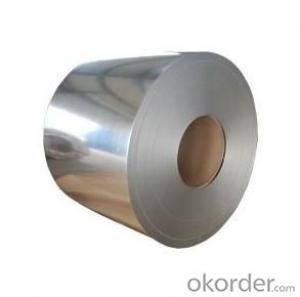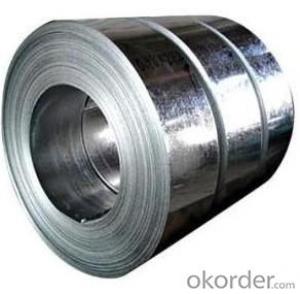GI/Hot DIP Galvanized Steel Coils Regular 1000mm 1219mm 1250mm Z60-Z120 Dx51d+Z, DC01
- Loading Port:
- China main port
- Payment Terms:
- TT OR LC
- Min Order Qty:
- 25 m.t.
- Supply Capability:
- 1000 m.t./month
OKorder Service Pledge
OKorder Financial Service
You Might Also Like
Product Description
Description:
EN 10147 Structure hot dip galvanized steel coil S250GD+Z, S350GD+Z (SGC340, SS275, SS340)/Custom Deep drawing hot dip galvanized steel coil DX52D+Z, DX53D+Z, S
Galvanized steel is taken cold rolled steel as the base metal, after continuous hot dip galvanizing process, the product produced is an excellent resistance to atmospheric corrosion coating steel coil, as the steel gets coated in layers of zinc and rust won't attach this protective metal; Cold rolled plate by hot-dip galvanizing may extend the service life of 15-20 years.
For countless outdoor, marine, or industrial applications, galvanized steel is an essential fabrication component. Hot dip galvanized steel is used in applications where steel may be exposed to weather, but where stainless steel is too expensive.
Application:
Construction
Manufacture anticorrosion, industrial and civil architecture roof boarding, roof grille
Light industries
Home appliance's case, civil chimney, kitchen utensils
Auto industry
Corrosion resistant parts of cars
Agriculture
Food storage, meat and aquatic products' freezing and processing equipment
Commerce
Equipments to store and transport materials, and packing implements
andard | EN 10142 | DX51D+Z, DX52D+Z, DX53D+Z |
JIS G3321 | SGCC, SGCD, SGCDD, SGC400 | |
ASTM A792M | CS type C, CS type B, DS, SS250 | |
Base Metal | Cold rolled steel coils SPCC, SPCD, SPCE, DC01, DC03, DC04, CS, DS, DDS, Q195, Q250, Q350 | |
Thickness | 0.14mm-3.0mm | |
Width | 600mm-1600mm | |
Coil ID | 508mm, 610mm | |
Zinc coating | 60g/m2-450g/m2 | |
Surface treating | chromium free passivation, chromium passivation, fingerprint resistant, oiled | |
Spangle types | Minimal spangle, zero spangle, regular and big spangle | |
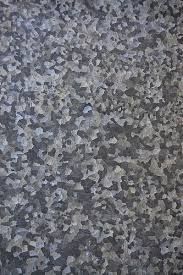
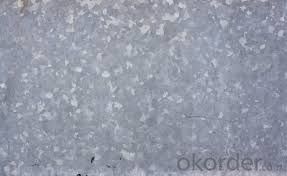
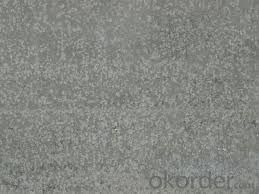
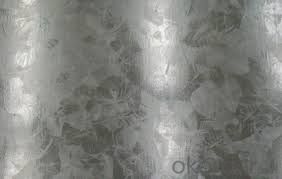
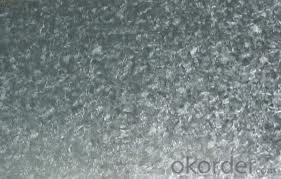
- Q: What are the different methods of punching steel coils?
- There are several different methods used for punching steel coils, depending on the specific requirements and desired outcome. Here are a few common methods: 1. Mechanical Punching: This method involves using a mechanical press to apply force and create holes in the steel coil. It utilizes a punch and die set, where the punch is driven into the coil to create the hole. Mechanical punching is ideal for punching small to medium-sized holes and is often used in high-volume production settings. 2. Hydraulic Punching: Hydraulic punching utilizes hydraulic pressure to drive the punch into the steel coil. This method is often used for punching larger holes or shapes that require greater force. Hydraulic punching machines offer precise control and can handle thicker and harder materials. 3. Laser Cutting: Laser cutting is a non-contact method that uses a laser beam to cut through the steel coil. A focused laser beam is directed onto the coil, melting and evaporating the material to create the desired shape or hole. Laser cutting offers high precision and can be used for complex shapes and patterns. 4. Plasma Cutting: Plasma cutting involves using a high-velocity jet of ionized gas (plasma) to melt and remove the steel coil material. This method is suitable for cutting thicker steel coils and is often used for larger holes or irregular shapes. 5. Waterjet Cutting: Waterjet cutting utilizes a high-pressure jet of water mixed with abrasive particles to cut through the steel coil. This method is versatile and can effectively cut through various materials, including steel. Waterjet cutting is known for its high precision and clean cuts. Each method of punching steel coils has its own advantages and considerations. Factors such as material thickness, desired precision, production volume, and cost will determine the most suitable method for a specific application.
- Q: How are steel coils used in the manufacturing of construction formwork?
- Steel coils are used in the manufacturing of construction formwork to create the framework and support structures needed for pouring concrete. The steel coils are typically shaped and cut into various sections to form the desired shape and size of the formwork. These coils provide strength, durability, and stability, ensuring that the formwork can withstand the weight and pressure of the concrete during the construction process.
- Q: What are the different types of steel coil surface treatments for corrosion resistance?
- To enhance corrosion resistance, different methods are utilized for treating the surface of steel coils. These treatments create a protective layer that prolongs the lifespan of the steel and prevents corrosion. Some commonly used treatments for corrosion resistance include: 1. Galvanizing: Widely recognized as an effective method, galvanizing involves applying a layer of zinc to the steel coil's surface. The zinc acts as a sacrificial anode, corroding before the steel, thus safeguarding it against rust and corrosion. 2. Chromate conversion coating: This treatment entails applying a chromate-based solution to the steel coil's surface. The chromate forms a thin film that serves as a protective barrier against corrosion. Moreover, it improves the adherence of paint or other coatings that may be applied subsequently. 3. Phosphating: Phosphating is a process where a phosphate coating is added to the steel coil. This coating establishes excellent corrosion resistance by chemically bonding with the steel surface. It also enhances the adherence of subsequent coatings or paints. 4. Organic coatings: These coatings comprise paint or epoxy and are applied to the steel coil to create a barrier between the steel and its surroundings. They offer corrosion resistance and enhance aesthetic appeal. The selection of organic coating depends on the specific application and the desired level of corrosion protection. 5. Zinc-rich paint: Similar to galvanizing, zinc-rich paint contains a high concentration of zinc particles. When applied to the steel coil, these particles provide sacrificial protection, preventing corrosion. This coating is commonly employed in harsh environments or for steel coils exposed to frequent moisture or saltwater. It is important to consider various factors such as the application, environment, budget, and required level of corrosion resistance when choosing a surface treatment. Consulting with a steel coil manufacturer or corrosion specialist is advisable to determine the most suitable treatment for a specific situation.
- Q: Are steel coils used in electrical equipment manufacturing?
- Yes, steel coils are commonly used in electrical equipment manufacturing. Steel coils are often used as core material in transformers, motors, and generators due to their magnetic properties and ability to efficiently transfer electrical energy. They provide structural support and help enhance the performance and efficiency of electrical equipment.
- Q: What is the weight range of steel coils?
- The weight range of steel coils varies depending on the specific type and dimensions, but they generally range from a few hundred kilograms to several tonnes.
- Q: What is the major disadvantage of hardened steel? Do you think this form of iron would be wear resistant and retain a sharpened edge?
- a disadvantage is the fact that the cold forming capability of this steel
- Q: What are the common packaging defects in steel coils?
- Steel coils can have various packaging defects. These include edge damage, rust or corrosion, coil slippage, coil damage during handling, inadequate protection against impacts, improper coil strapping or banding, and insufficient labeling or identification. When the edges of the steel coil are not properly protected or wrapped, it can lead to dents, scratches, or deformities. This compromises the coil's integrity and can result in reduced performance or structural issues. If steel coils are not adequately protected during packaging, they can be prone to rust or corrosion. Moisture or harsh environmental conditions can cause oxidation, resulting in rust spots or widespread corrosion. This weakens the steel and makes it less suitable for its intended use. Improper packaging can cause the coils to shift or slip within the packaging material during handling or transportation. This can lead to misalignment, deformation, or interlocking, making it difficult to separate or use the coils effectively. Rough handling, improper lifting techniques, or inadequate support can cause mechanical damage to the steel coils. This can result in dents, scratches, or more severe structural damage, impacting their functionality or performance. Steel coils need sufficient protection against impacts during transportation or storage. Insufficient padding or cushioning can lead to deformities, dents, or fractures in the coil due to impacts or collisions. If the strapping or banding used to secure the steel coils is not properly applied or tightened, it can cause coil slippage or even complete unraveling of the packaging. This creates a tangled mess of steel coils, making them difficult to handle, transport, or use. Proper labeling and identification are crucial for efficient handling, storage, and tracking of steel coils. Inadequate or incorrect labeling can cause confusion, delays, or even loss of the coils during transportation or storage. To prevent these packaging defects, it is important to follow proper guidelines, use appropriate materials, provide adequate protection, and ensure proper labeling and identification of steel coils. Regular inspections and quality checks throughout the packaging process can help identify and rectify any defects before shipping or use.
- Q: I do a lot of scrapping and would like to be able to separate stainless steel from regular steel. The magnet test doesn't always work since stainless can be magnetic, but what are some ways that I can for sure tell the difference? Or even something like a sound that they make that may help me to tell the difference.
- If you do a lot of scrapping. It is best to get XRF handheld metal analyzer. But they are quite price. Around USD 40.000 upwards! Magnet may only help you sort SUS304/316/201 from SUS430 and metal. But then there might be other alloy. Thus it is best to get XRF analyzer if you feel it is worth the price.
- Q: How are steel coils inspected for quality control purposes?
- Steel coils are inspected for quality control purposes through various methods such as visual inspection, dimensional checks, and non-destructive testing techniques. Visual inspection involves examining the surface of the coil for any defects or irregularities. Dimensional checks are conducted to ensure that the coil meets the specified thickness, width, and length requirements. Non-destructive testing techniques like ultrasonic testing or magnetic particle inspection are used to detect internal flaws or defects in the steel coil. These inspection methods help ensure that the steel coils meet the desired quality standards before they are used in various applications.
- Q: i heard steel type is good and i don't have any i have defeated all the trainers up to the icicle badge (i have got the icicle badge but not the one after) where can i get one?
- lucario is both fighting and steel if you got piplup, empoleon is water and steel, if you happen to have a shieldon (only in pearl) he is ground and steel. Bronzor and bronzong are both psychic and steel you can find them in wayward cave is the easiest place that is under cycling road Steelix is in victory road but i guess you aren't there yet hehehe.... aside from dialga, who is dragon and steel i think those are it, unless you have any others like heatran or magenezone sorry i can't help much Oh but I can trade a steeliz if you want? my name is JAY my fc is 1375.4387.9544 =D
Send your message to us
GI/Hot DIP Galvanized Steel Coils Regular 1000mm 1219mm 1250mm Z60-Z120 Dx51d+Z, DC01
- Loading Port:
- China main port
- Payment Terms:
- TT OR LC
- Min Order Qty:
- 25 m.t.
- Supply Capability:
- 1000 m.t./month
OKorder Service Pledge
OKorder Financial Service
Similar products
Hot products
Hot Searches
Related keywords
